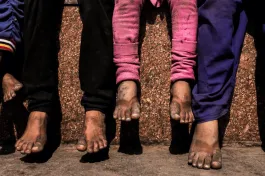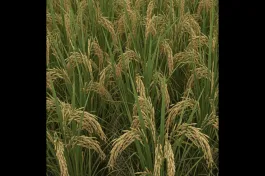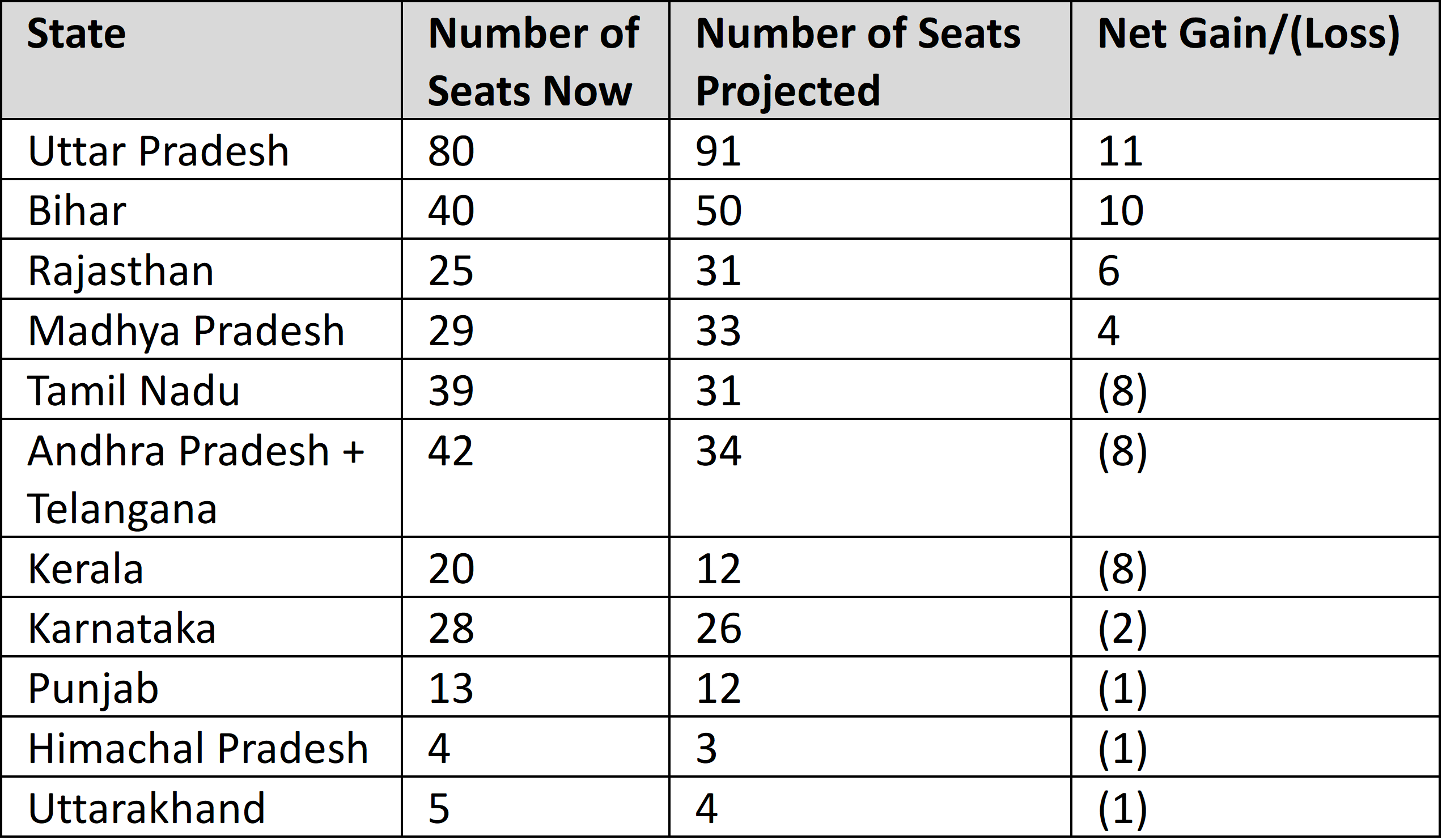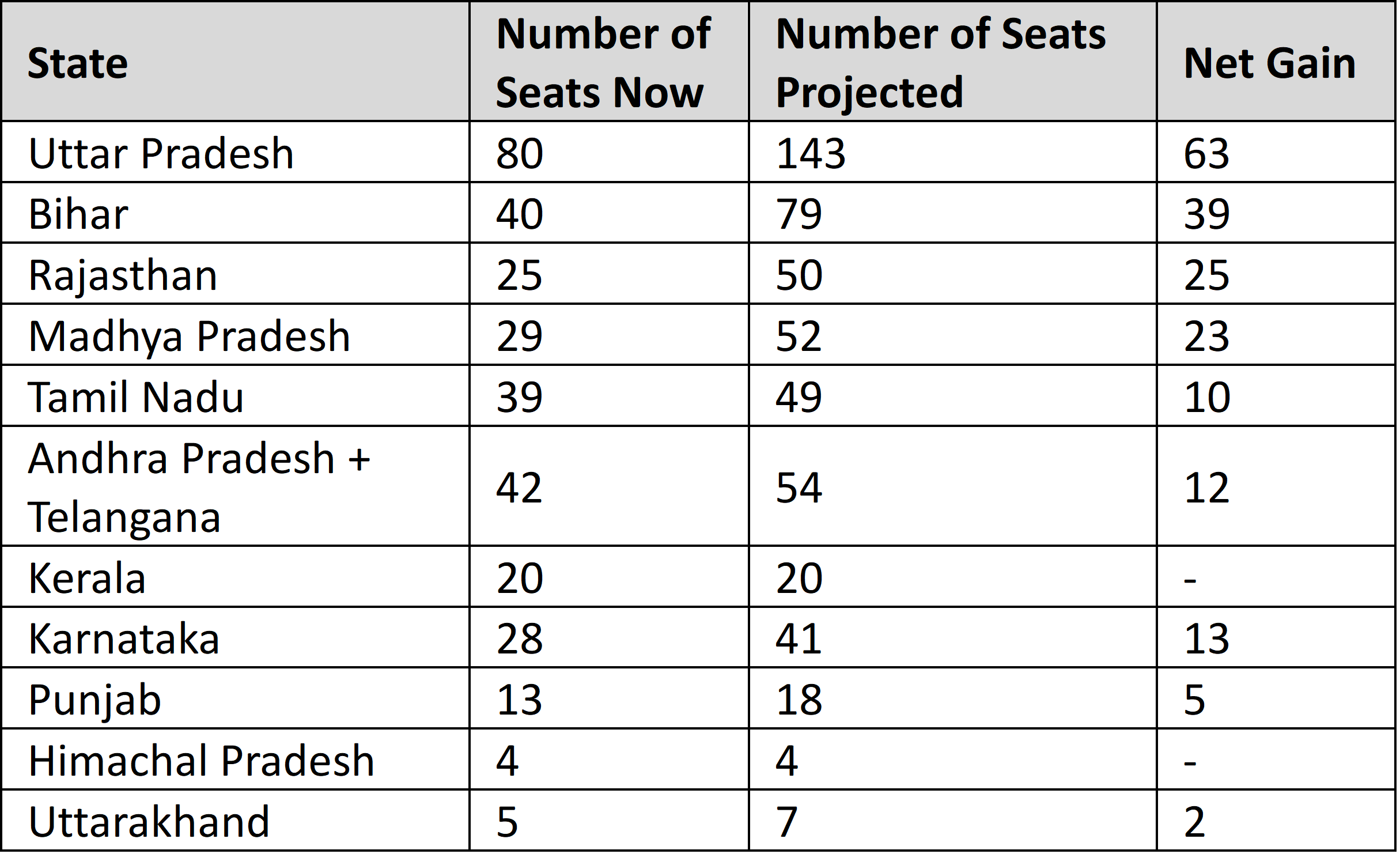Delimitation in India means the process of fixing the number of seats and boundaries of territorial constituencies in each state for the Lok Sabha and legislative assemblies. It also includes determining the seats to be reserved for the Scheduled Castes (SC) and Scheduled Tribes (ST) in these houses. After the 106th constitutional amendment in 2023 (popularly known as Women’s Reservation Bill, 2023) this would also involve determining the number of seats to be reserved for women in the Lok Sabha and legislative assemblies.
Articles 82 and 170 of the Constitution provide that the number of seats a state has in the Lok Sabha and legislative assembly as well its division into territorial constituencies be readjusted after each census. This “delimitation process” is performed by a “delimitation commission” that is set up under an act of parliament. Such an exercise was carried out after the 1951, 1961 and 1971 censuses.
Constitutional Requirement
“Democracy” means “rule or government by people”. It follows that the government is elected by the majority with a broad principle of “one citizen-one vote-one value”. The number of seats in the Lok Sabha based on the 1951, 1961 and 1971 censuses was fixed at 494, 522, and 543, when the population was 36.1 crore, 43.9 crore, and 54.8 crore, respectively. This broadly translated to an average population of 7.3 lakh, 8.4 lakh, and 10.1 lakh per seat, respectively.
In the normal course, the delimitation process for the number of seats, boundaries of territorial constituencies, and the reserved seats for SCs and STs would have happened on the basis of the 2031 census.
Considering the federal nature of our polity, the delimitation process has to take into consideration the difference in population growth among various states. It has been frozen after the 1971 census to encourage states with a higher population growth to take measures to control it so that they do not end up having a higher number of seats. This was done through the 42nd Amendment Act of 1976 till the year 2000 and this was extended by the 84th Amendment Act of 2001 till 2026. So, the population on the basis of which the number of seats is allocated refers to the population according to the 1971 census.
This number is to be readjusted on the basis of the first census after 2026. The boundaries of territorial constituencies were re-adjusted (without changing the number of seats) and seats for the SCs and STs were determined according to the 2001 census. This will again be done after the first census after 2026.
The 2021 census was initially postponed because of the Covid-19 pandemic and after that due to delays on the part of the central government. In the normal course, the delimitation process for the number of seats, boundaries of territorial constituencies, and the reserved seats for SCs and STs would have happened on the basis of the 2031 census, which would have been the first census after 2026. However, with the 2021 census postponed and 2026 nearing, there is again talk about an impending delimitation exercise.
What are the Issues?
As explained, the number of seats was frozen on the basis of the 1971 census to encourage population control measures. The population explosion that has happened in our country during the last five decades has been uneven, with some states such as Uttar Pradesh, Bihar, Madhya Pradesh, and Rajasthan having a greater increase in numbers than states such as Kerala, Tamil Nadu, Karnataka, and Andhra Pradesh.
There are two options that are being discussed in the public domain on a revised delimitation exercise on the basis of the projected population of various states as of 2026. The first is to continue with the existing 543 seats and redistribute them among various states (Exhibit 1) and the second is to increase the number of seats to 848 with a proportionate increase in the various states (Exhibit 2).
It can be noticed in both these scenarios that the southern states, the smaller states in the north such as Punjab, Himachal Pradesh, and Uttarakhand, and the north-eastern states are bound to be at a disadvantage when compared to Uttar Pradesh, Bihar, Madhya Pradesh, and Rajasthan. This may go against the federal principles of our country and may lead to a feeling of disenchantment in the population of the states that stand to lose their representation.
Any fresh delimitation that affects the political representation of southern states goes against the philosophy for freezing the seats according to the 1971 census because these states that have been better at controlling their populations.
It is also noteworthy to refer to the statement of objects and reasons in the 84th Amendment Act of 2001 that extended the freeze on number of seats from 2000 to 2026. It reads as follows, “There have been consistent demands, both for and against undertaking the exercise of fresh delimitation. Keeping in view the progress of family planning programmes in different parts of the country, the government, as part of the national population policy strategy, recently decided to extend the current freeze on undertaking fresh delimitation up to the year 2026 as a motivational measure to enable the state governments to pursue the agenda for population stabilisation.”
Thus, any fresh delimitation that affects the political representation of southern states goes against the philosophy for freezing the seats according to the 1971 census because these states that have been better at controlling their populations will lose out on their political significance.
International Practices
In a federation like the US, the number of seats in the House of Representatives (equivalent of our Lok Sabha) has been capped at 435 since 1913. The population of the country has increased almost four times from 9.4 crore in 1911 to an estimated 33.4 crore in 2023. The seats among the states are redistributed after every census through the “method of equal proportion”. In this method, as a first step, each of the 50 states is given its one guaranteed seat in the House of Representatives, leaving 385 seats to assign.
The remaining seats are allocated one at a time to the states on the basis of a formula that considers the state’s population and number of seats it holds. This does not result in any significant gain or loss for any of the states. For example, based on the census of 2021, the re-apportionment has resulted in no change in the number of seats for 37 states, while Texas gained two seats, five other states gained one seat each, and seven states lost one seat each.
In the European Union (EU) Parliament, which consists of 720 members as of now, the number of seats is divided among 27 member countries on the basis of the principle of “degressive proportionality”. Under this principle, the ratio of population to the number of seats shall increase as the population increases. For example, Denmark with a population of around 60 lakh has 15 seats (average population of 4 lakh per member) against Germany with a population of 8.3 crore having 96 seats (average population of 8.6 lakh per member).
However, this degressive proportionality method is beginning to receive its share of criticism in more populous countries in the EU. It poses a challenge to the democratic legitimacy and public acceptance of this system as the population of larger countries is under-represented in such a system. There are suggestions to supplement this system with a proportional completion system in which additional seats will be provided to compensate for imbalances based on the vote share of major parties.
According to the latest exercise that was carried out before the UK general election of July 2024, England gained 10 seats while Scotland and Wales lost two and eight seats, respectively.
The German federal parliament has 598 seats that are filled through a system of mixed member proportional representation (MMPR). Of the 598 seats in the Bundestag (their equivalent of our Lok Sabha), 299 seats (50%) are filled from constituencies under the first past the post system. The voters also provide their preference for a party while voting. The remaining 299 seats are filled by apportioning them among parties that secure at least 5% of the votes.
The United Kingdom is not a federation like India. However, it consists of four separate countries—England, Scotland, Wales, and Northern Ireland. The total number of seats is set at 650 for the UK parliament. However, boundary commissions (equivalent of our delimitation commission), are set in these four countries to review the boundaries as well as redistribute the number of seats among them. According to the latest exercise that was carried out before the general election of July 2024, England gained 10 seats while Scotland and Wales lost two and eight seats, respectively. This was based on relative changes in population.
Ideal Solution
Any of the methods for a revised delimitation has its own set of pros and cons. Political sagacity and statesmanship of the highest order and wide consultation with states, communities, and social formations would be required, given the political sensitivity and impact of the issue. However, despite the best intentions and transparent discussions, there could be a stalemate on accepting any formula. This leaves us with an alternative suggestion that may also be considered.
The issue arises as the democratic and federal principles seem to be at loggerheads in the delimitation exercise as it is envisaged now. However, they can be harmoniously reconciled by giving equal importance to both. The main work of a member of parliament (MP) is to legislate on “Union List” matters such as defence, external affairs, railways, telecommunication, and taxation, and to hold the central government accountable. A majority of the schemes of the central government are implemented by state governments.
It is pertinent to note that considering the present strength of Lok Sabha is 543 and the estimated population of 2026 would be 1.467 billion, an MP would represent an average of 2.7 million people. Even if the Lok Sabha’s strength were to be increased to 848, an MP would represent an average of 1.7 million people. While there may be a relative reduction in population represented by each MP, the absolute number is still very high.
The number of MLAs in each state may be increased in line with the population estimated in 2026 …The MLAs would be in closer contact with their constituents and this would adequately address the representational requirement.
It is also estimated that after continuing to increase for the next three decades, the Indian population will start to decline from the early 2060s. Further, it is unrealistic to believe that representatives in Parliament will represent only their constituency’s interest, skipping over their state’s interests. On the contrary, it is observed that Lok Sabha MPs give greater importance and thrust to their state’s issues more than the interests of their constituency.
So, it is best that the number of MPs in Lok Sabha be capped at the present number of 543, which would ensure there is no disruption in the present representation from various states. This will maintain and uphold the federal principle.
The number of MLAs in each state may be increased in line with the population estimated in 2026 (without changing the number of Rajya Sabha seats). The members of legislative assemblies (MLAs) would be in closer contact with their constituents and this would adequately address the representational requirement. The number of elected Rajya Sabha members can remain at the existing 233. Rajya Sabha MPs only represent their respective states in the parliament, not any constituency. Further, as held by the Supreme Court in the Kuldip Nayar case (2006), the Rajya Sabha is more a chamber that acts as a check and balance on the Lok Sabha than one that represents the interests of various states.
This brings us to the most important reform needed for strengthening democracy. It is to empower local bodies such as panchayats and municipalities, which engage with citizens on a day-to-day basis. The devolution of powers and finances to these bodies must be significantly increased to strengthen participative democracy at the grassroots level.
Meanwhile, a census and delimitation for women’s reservation in the Lok Sabha and state assemblies should be taken up immediately and completed as soon as possible so that it can be implemented by 2029.
Rangarajan R. is a former IAS officer and author of Polity Simplified, a guide to the civil service exams. The views expressed here are personal.











